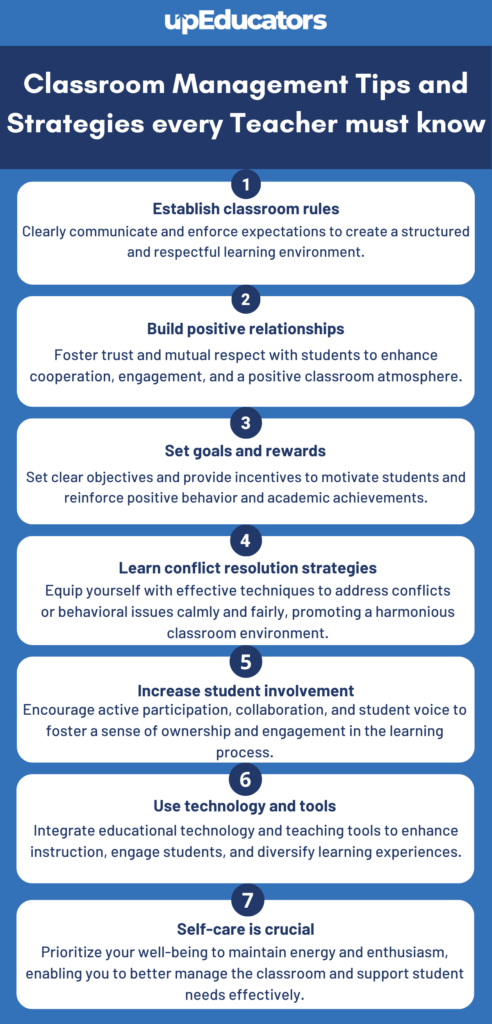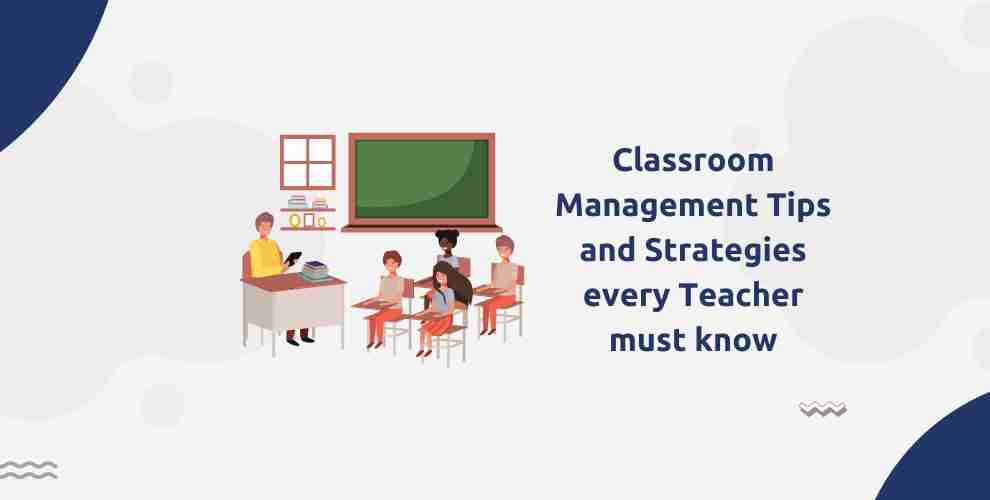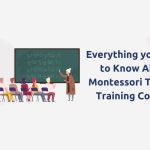Ms Ritu, a middle school teacher, noticed that two of her students were having conflicts. They would argue during group projects and even engage in physical altercations in the hallway. Ms Ritu realized that the situation needed to be addressed as it was affecting not only the two students but also their classmates. She discovered that the conflict was caused by miscommunication and hurt feelings and that she needed to help both students express their feelings and perspectives respectfully.
To resolve the issue, Ms Rodriguez used conflict resolution skills to mediate a discussion between the two students. She encouraged them to actively listen to each other, express their feelings using “I” statements, and identify the root causes of their conflict. By the end of the discussion, the students had reached a mutual understanding and agreed to work together on their project. Ms Ritu reinforced positive communication and conflict resolution skills in her classroom to ensure that her students continued to build positive relationships and resolve conflicts in a constructive manner.

Classroom management skills like conflict resolution help teachers gain better control of the classroom. After talking to thousands of teachers trained by upEducators, the expert trainers have suggested a few common classroom management tips and strategies that every teacher must know. So let us look at these tips and strategies.
- Establish classroom rules
- Build positive relationships with students
- Set Goals and Rewards
- Learn Conflict Resolution Strategies
- Increase involvement of students
- Use technology and tools in the classroom
- Self-care is crucial for better classroom management
Establish classroom rules
Establishing classroom rules is an essential first step toward better classroom management. Effective classroom management sets the tone for a positive learning environment where students feel safe, respected, and motivated to learn. Classroom rules should be clear, concise, and age-appropriate, and they should align with the school’s code of conduct.
Teachers should involve their students in creating classroom rules to promote a sense of ownership and responsibility for maintaining a positive learning environment. It’s also important to communicate the rules and consequences clear to students and enforce them consistently.
Build positive relationships with students
Establishing positive relationships with students is essential for better classroom management. When teachers foster positive relationships with their students, it creates a supportive and respectful learning environment where students feel valued and motivated to learn. Teachers can build positive relationships with students by showing interest in their lives, listening actively to their concerns, and treating them with respect and kindness.
In turn, students who have positive relationships with their teachers are more likely to behave appropriately in the classroom and be more engaged in their learning. They are also more likely to seek help when needed and feel comfortable expressing their thoughts and opinions.
Positive relationships also allow teachers to better understand their student’s needs and preferences, which helps them tailor their instruction to better meet individual student needs.
Set Goals and Rewards
Setting goals and rewards is an effective strategy that can help improve classroom management. By setting clear goals and expectations, students are more likely to understand what is expected of them and work towards meeting those goals. When students meet their goals or show positive behaviour, it is important to provide recognition and rewards, such as praise, extra free time, or other incentives. Rewards can help motivate students to continue to meet expectations and build positive habits.
Additionally, it is important to make sure that rewards are consistent and fair so that students feel that they are being treated equally.
Learn Conflict Resolution Strategies
Learning conflict resolution strategies is a key component of effective classroom management. Conflict is inevitable in any group setting, and classrooms are no exception. Teachers who are equipped with conflict resolution strategies can help students resolve conflicts in a respectful and constructive manner, creating a more positive and productive learning environment.
Teachers can help students learn conflict-resolution strategies by modelling positive communication and problem-solving skills, and by explicitly teaching these skills to students. Strategies may include active listening, using “I” statements, brainstorming solutions, and practicing empathy.
Increase involvement of students
Increasing student involvement is a crucial aspect of better classroom management. When students are actively engaged in the learning process, they are less likely to become disengaged, bored, or disruptive. One way to increase student involvement is to use interactive teaching methods such as group work, discussions, and hands-on activities. By giving students the opportunity to collaborate with their peers and express their opinions, teachers can foster a sense of ownership and investment in the learning process.
Use technology and tools in the classroom
With the integration of technology, teachers can create a more engaging and interactive learning environment, which can help keep students focused and motivated. For example, teachers can use digital tools like interactive whiteboards, educational apps, and online collaboration tools to create more interactive lessons and activities that keep students engaged.
In addition to improving engagement, technology can also help teachers manage the classroom more efficiently. For instance, teachers can use classroom management apps like ClassDojo to share assignments and resources with students, track student progress, and communicate with parents. This can help streamline administrative tasks and make it easier for teachers to manage the classroom and monitor student performance.
Moreover, technology can also help students with different learning needs, including students with disabilities or language barriers. For example, assistive technology tools like speech-to-text and text-to-speech software can help students with reading and writing difficulties participate in class and complete assignments.
Self-care is crucial for better classroom management
Teachers who prioritize self-care are better able to manage their classrooms effectively, create a positive learning environment, and promote student success. Teachers who practice self-care techniques such as meditation, exercise, or spending time with loved ones are less likely to feel stressed, burned out, or overwhelmed. This helps them remain calm and focused in the classroom, which positively impacts their teaching and the learning experience of students. Self-care also helps teachers in building resilience, which enables them to bounce back from challenges and setbacks. This allows them to handle difficult situations in the classroom with greater ease, such as managing disruptive behavior or dealing with challenging students.
Effective classroom management is crucial for creating a positive and productive learning environment. By implementing the tips and strategies discussed in this blog, teachers can build a strong classroom community, foster positive student-teacher relationships, and support student learning and growth.
Author: This article is written by Samiya Rashid for upEducators blog.




